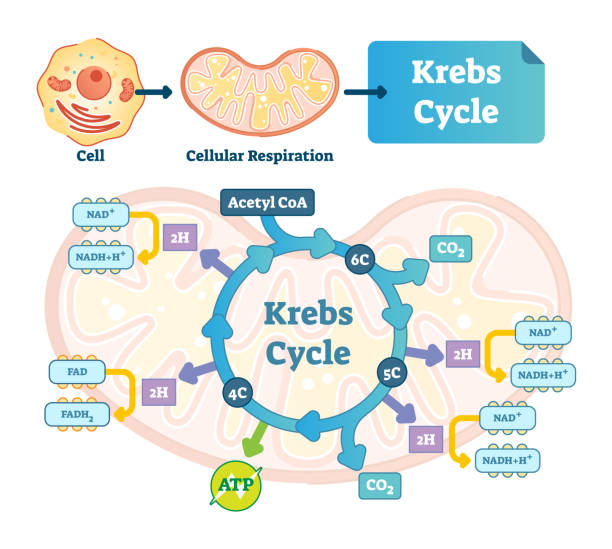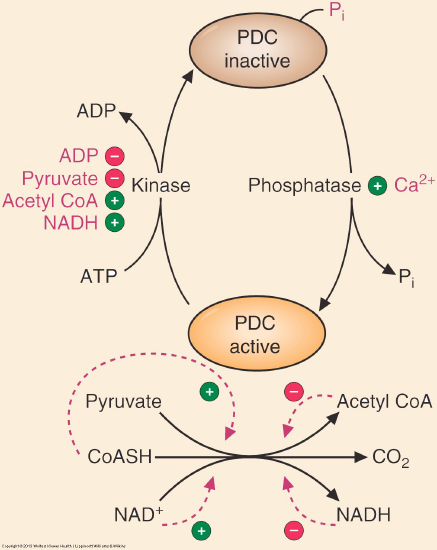
ABSTRACT:
In this article, we will discuss about the fascinating mechanism of Krebs cycle. It also called citric acid cycle and TCA cycle. It is a vital metabolic pathway that occurs in the mitochondria of eukaryotic cells. Named after its discoverer, Sir Hans Krebs, this cycle is responsible for generating energy in the form of adenosine triphosphate (ATP) and producing key molecules required for various cellular processes. We will also discuss the hormonal, enzymatic and other regulations of the mechanism. We will also provide references to understand the concept deeply.
INTRODUCTION OF MECHANISM OF KREBS CYCLE:
The Krebs cycle, also known as the citric acid cycle or the tricarboxylic acid (TCA) cycle. It is a vital metabolic pathway that occurs in the mitochondria of eukaryotic cells. It plays a central role in the generation of energy by oxidizing acetyl-CoA derived from carbohydrates, fats, and proteins. Understanding the mechanism and regulation of the Krebs cycle is crucial for comprehending cellular respiration and its implications in various physiological processes. This article aims to delve into the intricacies of the Krebs cycle, highlighting its steps, enzymes, and regulatory mechanisms.
MECHANISM OF KREBS CYCLE:
The Krebs Cycle is a series of chemical reactions that occur within the mitochondria of eukaryotic cells. It involves the oxidation of acetyl-CoA, a two-carbon molecule derived from the breakdown of glucose, fatty acids, or amino acids. The cycle consists of eight steps, each catalyzed by specific enzymes.
1. CONDENSATION OF ACETYL CoA AND OXALOACETATE:
Acetyl-CoA combines with a four-carbon molecule, oxaloacetate, to form a six-carbon molecule called citrate. Citrate synthase enzyme is responsible for this step.
2. ISOMERIZATION OF CITRATE:
Citrate converted into its isomer, isocitrate, through the removal of a water molecule. Aconitase enzyme responsible for this step.
3. OXIDATIVE DECARBOXYLATION OF ISOCITRATE:
Isocitrate undergoes oxidative decarboxylation, resulting in the release of carbon dioxide and the formation of alpha-ketoglutarate. Isocitrate dehydrogenase is responsible for this step.
4. DECARBOXYLATION OF ALPHA KETOGLUTARATE:
Alpha-ketoglutarate further decarboxylated, releasing another molecule of carbon dioxide and forming succinyl-CoA. Alpha ketoglutarate dehydrogenase complex regulate this step.
5. DEHYDROGENATION OF SUCCINYL CoA:
Succinyl-CoA converted into succinate, releasing a molecule of ATP. Succinyl CoA Synthetase enzyme regulate this step.
6. OXIDATION OF SUCCINATE:
Succinate oxidized to fumarate, generating another molecule of ATP. Succinate dehydrogenase enzyme is responsible for this step.
7. HYDRATION OF FUMARATE:
Fumarate hydrated to form malate. Fumarase enzyme is responsible for this step.
8. OXIDATION OF MALATE:
Malate oxidized to regenerate oxaloacetate, completing the cycle. Malate dehydrogenase enzyme regulate this step.

REGULATION OF MECHANISM OF KREBS CYCLE:
The Krebs cycle is tightly regulated to maintain metabolic homeostasis and adapt to the energy demands of the cell. Several mechanisms control the activity of key enzymes involved in the cycle.
1. SUBSTRATE AVAILABILITY:
The rate of the Krebs cycle is primarily regulated by the availability of substrates, such as acetyl-CoA and oxaloacetate. These substrates are derived from various metabolic pathways, including glycolysis, fatty acid oxidation, and amino acid metabolism.
2. ALLOSTERIC REGULATION OF MECHANISM OF KREBS CYCLE:
Several intermediates of the Krebs cycle act as allosteric regulators, modulating the activity of specific enzymes. For instance, high levels of ATP and NADH inhibit the activity of citrate synthase and isocitrate dehydrogenase, respectively, while ADP and NAD+ activate these enzymes.

3. HORMONAL REGULATION OF MECHANISM OF KREBS CYCLE:
Hormones, such as insulin and glucagon, play a role in regulating the Krebs cycle. Insulin promotes the synthesis of acetyl-CoA by stimulating glycolysis and fatty acid synthesis, while glucagon stimulates gluconeogenesis, leading to increased oxaloacetate availability.

4. FEEDBACK INHIBITION:
The Krebs cycle is subject to feedback inhibition by its end products. For example, high levels of ATP and NADH inhibit the activity of isocitrate dehydrogenase and α-ketoglutarate dehydrogenase, respectively, to prevent excessive energy production.
SIGNIFICANCE OF KREBS CYCLE:
The Krebs Cycle serves as a central hub for cellular metabolism, connecting various metabolic pathways. It not only generates ATP but also produces high-energy electron carriers, such as NADH and FADH2, which play a crucial role in oxidative phosphorylation, the final step of cellular respiration. Additionally, the cycle provides intermediates for the synthesis of amino acids, nucleotides, and other essential molecules required for cell growth and maintenance.
CONCLUSION:
The Krebs Cycle is a vital metabolic pathway that plays a central role in cellular respiration. By oxidizing acetyl-CoA and generating ATP, high-energy electron carriers, and key intermediates, this cycle ensures the efficient production of energy and the synthesis of essential molecules required for cell function. Understanding the Krebs Cycle is crucial for comprehending the intricate processes that occur within our cells and their significance in maintaining overall cellular health.
REFERENCES:
Nelson, D. L., Cox, M. M. Lehninger Principles of Biochemistry. 7th edition. W.H. Freeman and Company, 2017. https://www.vet-ebooks.com/lehninger-principles-of-biochemistry-pdf/
Berg, J. M., Tymoczko, J. L., Gatto, G. J. Stryer, L. Biochemistry. 8th edition. W.H. Freeman and Company, 2015. https://www.scirp.org/(S(351jmbntv-nsjt1aadkposzje))/reference/referencespapers.aspx?referenceid=2690640
Alberts, B., Johnson, A., Lewis, J., Raff, M., Roberts, K., Walter, P. Molecular Biology of the Cell. 6th edition. Garland Science, 2014. https://www.ncbi.nlm.nih.gov/books/NBK21054/
Voet, D., Voet, J. G., Pratt, C. W. Fundamentals of Biochemistry: Life at the Molecular Level. 5th edition. Wiley, 2016. https://www.wiley.com/en-us/Fundamentals+of+Biochemistry%3A+Life+at+the+Molecular+Level%2C+5th+Edition-p-9781118918401



Hey there! We deeply regret for the comment on your website. We’re committed to improving and learning. Join PassiveIncomePro, our vibrant community empowering individuals like you to discover the secrets of passive income. Discover exclusive content, powerful resources, and connect with like-minded individuals on your journey to financial freedom. Let’s embark on this transformative journey together and make a positive impact! Kindly note that this website is exclusively available to residents of the USA.
Unlock the secrets of financial independence with http://passiveincomepro.website.